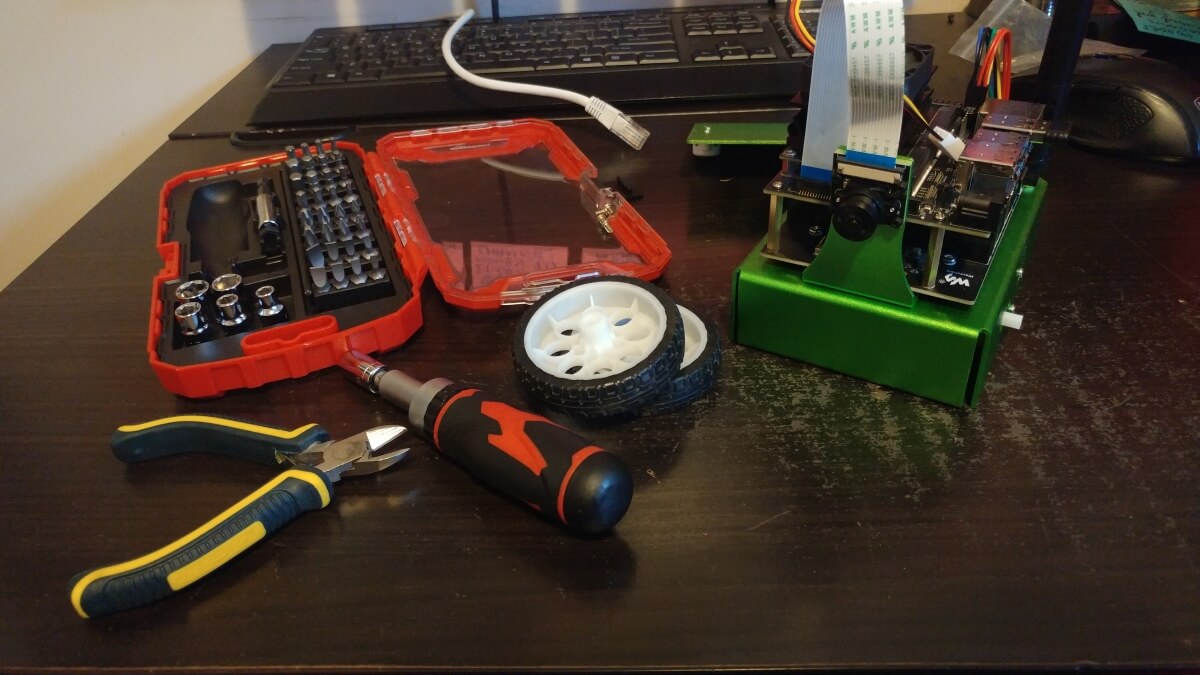Nvidia Jetbot first look

Nvidia Jetbot first look⌗
Assembling the bot, took about 30 minutes. I was using waveshare kit, the kit enclosure is made of metal so it is very sturdy. It also came with a motor hat and LED display showing useful things like IP address. My kit did not come with 18650 batteries, so make sure to buy your own. I charged it while off as recommended.
Before I turned it on, I made sure either the tires were removed or it was raised off the ground (with a block), so it didn’t drive off the table by accident while I was working on it!
I set up roscore to run as a service just so I didn’t have to constantly start it manually everytime I restarted the bot. This made things alot more convenient.

Autonomous Robotics⌗
I played around with the jetbot notebooks
The notebook I spent alot of time with was collision avoidance, as it contained the whole ML workflow i.e.
- Gather test data on Device (Nano)
- Train ML Model on Host (My PC with a GPU)
- Deploy onto Device
- Record results
- Repeat
This workflow made alot of sense, although I wonder if there is a more efficent way to move models and data between the embedded device and the Host PC!
Regarding data collection, one thing I learned was, it should be done using sensors that your device will most likely use
- e.g camera on the robot
Small things can influence how your model works e.g a person being in a picture can make a difference. So your data needs to cover all possible scenarios!
For the training portion, I took advantage of transfer learning
- Use a large pretrained net (e.g AlexNet) and train with our collected images
- Leverage the fact that AlexNet has learned many low level features
- replace AlexNet’s 1000 outputs wide layer with our 2 outputs wide layer (representing
blockedornot blocked)
My first attempt at Autonomous Robotics⌗
Experiment Results⌗
I Have done 6 training iterations so far:
- v1 ~100 images each of both classes (free and blocked)
- images were taken haphazardly
- jetbot kept falling off the desk
- v2 ~300 images each of both classes (~100 from v1 + ~200 new images)
- jetbot performed a little better but kept falling off the desk
- v3 to v5 ~450 images of each of both classes (images were taken from scratch)
- much better performance, still falling off desks but at a lower rate
- v6 ~400 images of each of both classes (images were taken from scratch)
- moved the jetbot to the floor as it had fallen off the desk one too many times
- still not perfect as you will see below
JetBot after some training⌗
As you can see, I have much to learn about training algorithms and camera work!
That being said, this was a very good experience. Nothing beats actually getting robot parts in your hands and making said parts do cool things! I have learned more in the past week than in months of online videos. If you want to get into robotics, this is a great way to start!
Some things to look forward too⌗
The tutorials were done using Jupyter Notebooks and Python, I am going to implement this stuff in C++ using ROS e.g
- Motor control
- Inferencing
- etc
I am also going to turn this into a legged robot walking robot. Why? you ask. Because I can, so look forward to posts about Reinforcement Learning and using ROS to control this Robot!
But before you get to see the legged robot, I will be detailing my experiences with Audio Generative Networks on the Jetson Nano. Spoiler It ends in FAILURE but I learned some important lessons which will definitely help you on your own Autonomous journey.
Stay tuned.
References⌗
- JetBot on GitHub